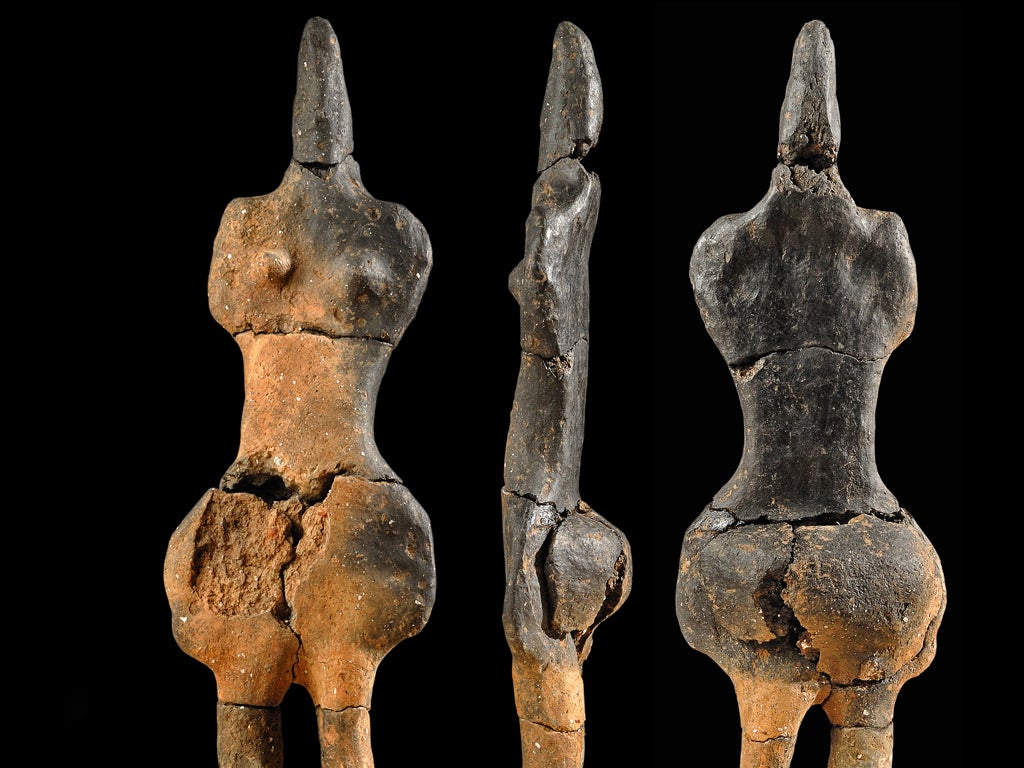The earth mother of all neolithic discoveries

Your support helps us to tell the story
From reproductive rights to climate change to Big Tech, The Independent is on the ground when the story is developing. Whether it's investigating the financials of Elon Musk's pro-Trump PAC or producing our latest documentary, 'The A Word', which shines a light on the American women fighting for reproductive rights, we know how important it is to parse out the facts from the messaging.
At such a critical moment in US history, we need reporters on the ground. Your donation allows us to keep sending journalists to speak to both sides of the story.
The Independent is trusted by Americans across the entire political spectrum. And unlike many other quality news outlets, we choose not to lock Americans out of our reporting and analysis with paywalls. We believe quality journalism should be available to everyone, paid for by those who can afford it.
Your support makes all the difference.French archaeologists have discovered an extremely rare example of a neolithic "earth mother" figurine on the banks of the river Somme.
The 6,000-year-old statuette is 8in high, with imposing buttocks and hips but stubby arms and a cone-like head. Similar figures have been found before in Europe but rarely so far north and seldom in such a complete and well-preserved condition.
The "lady of Villers-Carbonnel", as she has been named, can make two claims to be an "earth mother". She was fired from local earth or clay and closely resembles figurines with similar, stylised female bodies found around the Mediterranean.
Although neolithic experts are revising their opinions, the figures have long believed to have been connected with the existence of a cult which worshipped a goddess of the hearth or of fertility.
The Somme "earth mother" appears to have broken into five or six parts while she was being fired between 4300 and 3600 BC. She was found in the ruins of a neolithic kiln at a French government "preventive" archaeological dig near Villers-Carbonnel on the banks of the river Somme in the département of the same name.
The figurine may be just the beginning of a vast archaeological harvest in Northern France in the next few years, stretching from palaeolithic times to the First World War. The French government's "preventive archaeology" agency, Inrap, has been given permission and the funds to explore 77 sites along the 60-mile course of the new 50m-wide Seine-Nord Europe canal for ocean-going barges linking the river Seine to Belgium and the Rhine.
The archaeologist in charge of the Villers-Carbonnel dig, Françoise Bostyn, told The Independent: "The statuette is very beautiful and remarkably preserved. We sometimes find fragments of such statuettes but rarely the whole figure."
The "earth mother of the Somme" may owe her survival, paradoxically, to the fact that she was broken while being made. Her various pieces were discovered in a collapsed kiln or oven.
Ms Bostyn said that the stylised figure, with inflated buttocks and thighs and rudimentary head and arms, closely resembled similar figures from the period found as far away as the Middle East.
Could the "lady of Villers-Carbonnel" represent the neolithic ideal of female beauty, long before the coming of fashion magazines, airbrushes and Photoshop?
Join our commenting forum
Join thought-provoking conversations, follow other Independent readers and see their replies
Comments